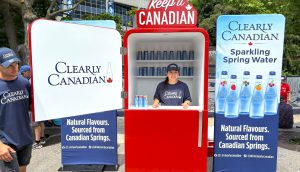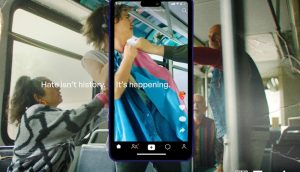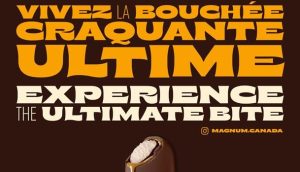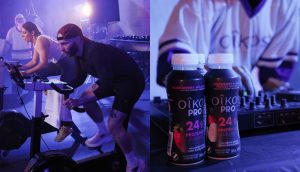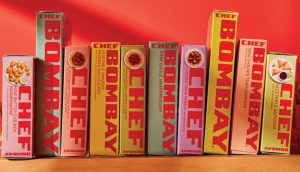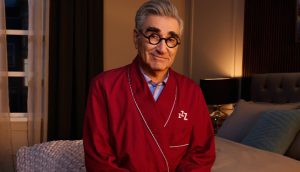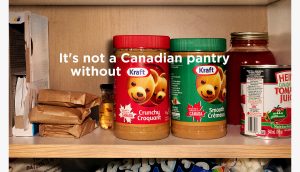Unilever’s Dove work did indeed scoop another Grand Prix for Canada, this one in the coveted Film category. In all, the Film jury awarded six Lions to Canada, taking Canada’s medal tally up to 17.This ties with Canada’s 2005 haul, and surpasses last year’s 15.
Jury president Bob Scarpelli, chair/CCO DDB Worldwide, says, ‘We had almost 4,500 entries – the short list was over 400, about 79 won. We set out to make it tough this year.’
And the jury instructions reflect that a true media-neutral philosophy is ruling even this most visual of categories. ‘The category was called film, but we looked at it as ideas on film, and didn’t judge based on execution,’ explains Scarpelli.
Here’s the big ideas that made the cut from Canada:
– A Gold Lion went to Wombleminki for Pfizer’s Viagra out of Taxi Toronto, and the campaign also won a Silver campaign Lion. Scarpelli says the jury singled out Womblewinki because ‘it reflected a women’s POV, and deserved special recognition.’
– The Fight Network won a Gold campaign Lion for work out of Cossette Communication Marketing Toronto. It was commended by the jury for its simplicity, and brilliant reflection of the product. The spots feature an agitated man going around town picking fights with the likes of construction workers, a parking lot attendant and a hot dog vendor.
– Holiday Inn’s ‘Long Goodnight’ spot by John St.Toronto won a Bronze Lion. And ‘Memorials,’ another Taxi Toronto spot for Orange Air Ambulance, also took a Bronze Lion.
The Grand Prix for Dove was controversial, as the jury moved the spot from the Public Service category it was entered in to make it eligible for the Grand Prix. The jury felt the piece was rightfully a corporate campaign, despite its promotion of a CSR effort of the brand. ‘We moved it from one category to another,’ says Scarpelli, ‘because we felt strongly enough about it to award it the Grand Prix. We felt it was the best of the best this year.’
Scarpelli responded to press questioning of the legitimacy of the move, saying: ‘We’re very proud of that winner. We had 12 excellent candidates to choose from. The one that resonated the most, that we thought had the most power, was Dove ‘Evolution.’ So we decided to reward the biggest idea we saw.’ Scarpelli also explained that the jury ‘reacted to the work on a gut level. That’s the one that had the most lasting impression.’
Canadian judge Zak Mroueh, of ECD Taxi Toronto, made the point that there were other category shifts, not just Dove. And Terry Savage, the festival’s exec chairman, said, ‘If there’s any responsibility, it’s us, we should have picked up it was in the wrong category.’
The jury described ‘Evolution’ as literally a signal of ad films future, given that it started as a viral and was able to reach consumers on a massive scale in a time when they are increasingly set on avoiding ads. And the nature of the win also cements the trend of large CPG players coming up with the best work. ‘I think we’re seeing an evolution,’ says Scarpelli. ‘I think we have to applaud Unilever here. Household products and health and beauty were some of the strongest categories we saw. The bigger companies are realizing you have to engage people, and the way you need to reach the consumer has changed.’
Australian judge Emma Hill, group CD at Clemenger BBDO Melbourne, added that Dove should be celebrated for raising the bar. ‘It sends huge signals to clients about what they can be doing, and to young creatives.’
In the Titanium and Integratedcategory, which is designed to presage the future of advertsiing, the jury awarded just eight campaigns, alas none were Canadian.
Jury president Alex Bogusky, CCO Crispin Porter + Bogusky, admits that Titanium – which rewards innovation – has always been a bit of a mystery, and that the goal was to turn it into a category. Bogusky commented that some feel ‘integrated’ should be in regular categories, but they found that within the campaigns they short-listed, there was much higher levels of integration than the typical 360. ‘So in that way, it really does belong in Titanium. And on the innovation side, in its purest form, it doesn’t fit in other categories.
‘It should be confusing,’ Bogusky added. ‘It’s almost an incubator for new kinds of advertising. It’s not platinum, it’s a different kind of metal. But this sanctuary is a powerful thing for the industry that doesn’t exist anywhere else.’
So, to witness the most integrated and innovative work on the planet, these are the advertisers to study: Xbox King Games, the Burger King work out of Crispin Porter + Bogusky Miami, won Titanium Grand Prix as top innovation campaign. The idea was that the King had been so embeddedin pop culture, he could have his own game franchise. The effort sold over 3 million games in a six-week period leading up to Christmas, and BK cited the success of the gaming campaign and a closely intertwined integrated advertising campaign with a 40% increase in Q4 sales in North America.
Meanwhile, the Integrated Grand Prix went to Unilever’s Axe 3 out of Vegaolmosponce Buenos Aires. The Axe team created mixable fragrances – two Axes that combined woudl create a third intoxicating scent – and paired it creatively with the concept of ‘mixable’ women, which the brand invited its young lad demo to help blend via various interactive scenarios. The jury was impressed by how the Axe team managed to keep up the pace of innovation, and applauded the product mash-up.
Titanium Lions also went to Nike+ by R/GA New York, UNICEF’s Tap Project out of Droga5 New York, and to WWF’s Earth Hour from Leo Burnett Sydney.
Integrated Lions went to Nike’s Barrio Bonito out of BBDO Argentina Buenos Aires, Tate Tracks for Tate Modern out of Fallon London, and the World Press Photo Exhibition for the New Zealand Netherlands Foundation, out of Clemenger BBDO Wellington.
US judge Chuck Mc Bride, ECD at Cutwater, described the role of the Titanium as moving the industry up stream with these choices, which entail creating something new. ‘The idea of product development was a very important way to send a message.’ And on the integraton front as well, he added, as there’s too much mirroring going on. ‘Integration should change, because we’ve created a pattern.’
As to the trends to watch for, Bogusky says, ‘We’re looking at gaming as a mega trend. Film has been dominant for narrative story telling; now gaming is shifting in terms of cultural impact, especially for young people. So I think game will grow as an element of any campaign, and as a business model.’
The other trend was mash-ups, companies coming together to create things that couldn’t happen with just one or the other. The Tate win for instance involved popular musicians creating tracks for the works of art, in order to interest a younger demo. The tracks were first heard in gallery, and then released, creating its own ‘art’ product.
Bogusky predicts this trend is going to be more and more powerful, and posits: ‘Is product going to be a category in Cannes?’. He sees a big opportunity for agencies to bring their creativity and consumer insight to bear in this field. ‘Agencies can help create products that market themselves.’
Mark Tutssel, worldwide CCO of Leo Burnett says looking ahead, ‘the biggest thing for me is there has to be a value exchange. If you look at all the winners, there’s a real understanding of how people consume advertising. Each idea had a big valuable core behind it. Not just to the industry, to people.’
The Earth Hour project for instance took on the challenge of trying to save the world. In order to enable folks to do something about global warming, and promote individual small changes, they created an event designed to become a movement. On March 31st, Sydney was invited to turning off its lights for one hour – Earth Hour, and the idea was successful, and spread. 2.2 million switched off their lights, cutting Sydney’s energy consumption by 10.2%. Earth Hour was covered in over 40 countries, and other countries want to join the eco-activism project in 2008.
The jury pointed to the Tap Project as another example of this (which encouraged New York consumers to drink tap water as a trigger for fundraising), lauding an agency’s role in the creation of social activism in an ambitious way, and its ability to get government and companies to come together and unite behind an idea.
Tutssel concludes, ‘Titianum is basically seeding ideas, it has to be a catalyst for the future. There’s going to be some grey areas, but that’s the exciting thing, there are no boundaries. Ideas are now the currency.’
Network of the Year honors for 2007 went to BBDO, followed by DDB and Saatchi & Saatchi. And Agency of the Year was given to Saatchi & Saatchi New York, followed by DDB London, and Ogilvy & Mather Singapore.
A complete list of Cannes Lions winners is available at: www.canneslionslive.com.

